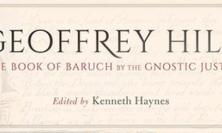Teresa White, in this book for Lent 2022, encourages us to cultivate hope in our troubled times. In my work as a spiritual director, I’ve not known a time like this in which there is quite as much anxiety around. It’s in the air we breathe. I feel it myself. The climate crisis feels grim and the pandemic has made it much more concrete, as well as bringing its own desolating challenges.
The positive side of this is that we need to feel the seriousness of the tasks at hand. I can imagine the Jesus we meet in the readings of Lent telling us to wake up to the reality of what we are doing to our planet. One of the negatives, though, is that our ability to hope is compromised. Ignatius points out how challenging circumstances can deplete the defences that protect us from malicious attacks of the enemy. Desolating events can lead us into desolate moods and to a decrease in that core theological virtue of hope. Even when the idea of hope is raised, the bad spirit ripostes by accusing us of a forced positivity that fails to face reality and of reaching for rose-tinted spectacles of vacuous optimism. When hope is so difficult to hold onto, that’s when we go to a deeper truth: we need God’s help in this.
Teresa White believes in the nearness of God, whose help is always on offer and who wants to deepen our hope. Her Lenten book affirms this and is ideal for individuals or groups in parishes meeting in person or online. Divided into seven chapters, each one ending with questions for reflection, it lends itself to the seven-week season. It could easily be extended into Easter, the season of hope par excellence.
White believes that God, who is with us, wants us to face our present and our futures with hope in our hearts. Contrarily, the bad spirit would prefer one of two possibilities: either we ignore the problems we face and carry on as if no change in how we live is needed, or we become overwhelmed by those problems and despair. Agere contra, says Ignatius in his best Latin. Act against the desolation. Move in the opposite direction, or in this case, directions. The path of hope is between these two unhelpful extremes. Aristotle would approve. We can look reality in the eye because of our assurance that God is with us and will be with us, and genuine hope is possible.
This grace of hope is not something that we have to manufacture ourselves. This hope comes from God as gift. We are not passive recipients of the gift, though. We have to be open to receive the gift that is on offer, to cooperate with the grace and join the dance that is life lived in the nearness of God. Teresa White gives practical suggestions of how to do that.
In the Spiritual Exercises, St Ignatius invites the one praying to stand and let God look at them. We see ourselves through the eyes of the one who holds us, and all of creation, in loving hands.
Teresa White also invites us to do something of that looking with God’s loving and liberating eye, and with two perspectives. One is telescopic and looks into the long distance. This project of creation will end well because it is God’s project and God is love. Ultimately, God has this. Not surprisingly, Julian of Norwich is cited. The other perspective is as near as God is near. On the uncertain way to that mysterious eschatological fulfilment, God is fabulously capable of delighting in the signs of hope that are all around us here and now. I don’t know how God can do that – know everything that is wrong with the world and with me, yet utterly love and even delight in every little thing that is good. If God can do that, and if God is near and wanting me to share something of that way of looking, then I can also notice and delight in these signs of hope that turn up every day. Both perspectives mean I can live and act with hope even in the midst of trials. It means that no act of love, however small, is without meaning. The providence of God is caring for us by caring through us. There are so many ‘moments of radiance’ in our world, and all of them are ‘bridges of hope . . . that encourage us to cross the chasm of our fears and to place our trust in things that lay beyond the limit of our sight’.
God invites us to ask for and be open to a share in God’s hope. This reminds me of the grace of the fourth week of the Spiritual Exercises, when we ask to experience something of the joy of the risen Christ. The Holy Spirit wants to give us Easter hope and joy. Teresa White’s Lenten book is one good way of disposing ourselves to receive the grace.
The reviewer, Stephen Hoyland, is a spiritual director and a member of the Jesuit Institute team.
Pray As You Go’s Lent 2022 retreat, ‘Hope and the nearness of God’, is based on this book. Find out more and follow the retreat at pray-as-you-go.org/article/hope-and-the-nearness-of-god-lent-retreat-2022






